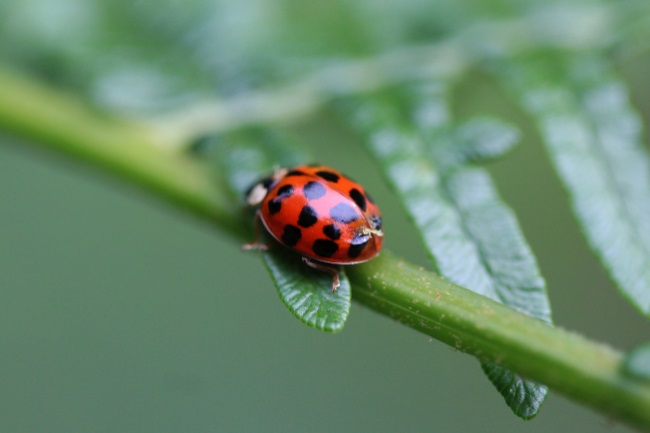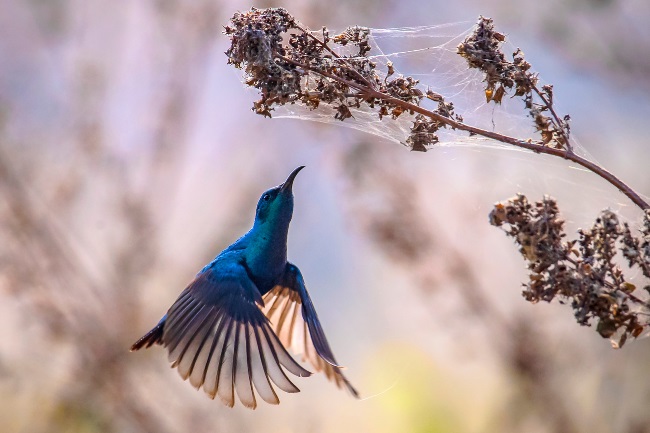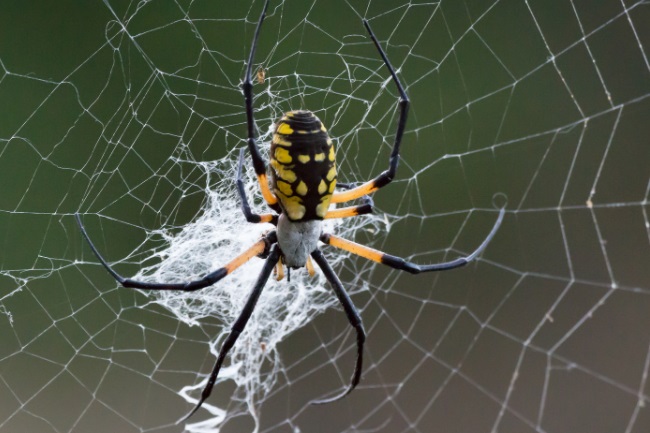Ladybugs are one of our most beloved and famous beetles. However, not everyone loves them enough to keep them from harm. Despite the ladybug’s toxic nature some animals have developed a taste for them as a brightly coloured snack.
Contents
Toxic dinner

Many animal species are insectivores, eating only insects, or have insects as part of their diet. Therefore, they will spend their days searching out worms, beetle, spiders, pretty much anything they can get their teeth or beaks into. Ladybirds, however, are often avoided as they contain harmful toxins that make them taste unpleasant when eaten.
With their bright colours, they warn predators to stay away, as too many ladybug suppers could result in illness or death. Unfortunately, most animals do not have the skills to pass on this knowledge to their young, meaning that a juvenile will often give a ladybug try before realising they aren’t worth the effort. This means that while not every ladybug is saved from a grizzly demise, many of them avoid it through association.
| Predator | Description |
|---|---|
| Birds | Many bird species, such as sparrows, swallows, and chickadees, feed on ladybugs. |
| Spiders | Certain spider species, including orb-weavers and crab spiders, prey on ladybugs caught in their webs or during active hunting. |
| Wasps | Some wasp species, such as paper wasps and mud daubers, hunt and feed on ladybugs, especially when they come into contact with their nests. |
| Mantises | Praying mantises are known to capture and consume ladybugs as part of their diet. |
| Amphibians | Some amphibians, like frogs and toads, may eat ladybugs if they come across them. |
| Reptiles | Certain reptiles, such as lizards and turtles, may consume ladybugs if they encounter them in their habitat. |
| Pest | Description |
|---|---|
| Aphids | Aphids are small, sap-sucking insects that are preyed upon by ladybugs. However, in some cases, aphids can overpower and consume ladybug eggs or larvae. |
| Lace Bugs | Lace bugs are known to feed on the eggs and larvae of ladybugs, reducing their population. |
| Assassin Bugs | Certain species of assassin bugs are predatory and can attack and consume ladybugs. |
| Ants | Some ant species may prey on ladybugs, particularly their eggs and larvae, if they come across them. |
| Ground Beetles | Ground beetles are generalist predators and may occasionally feed on ladybugs when they encounter them. |
Not all ladybugs are brightly coloured, however, and it has been shown that the duller the colour, the lower the toxins within the ladybugs are. So, for example, brown ladybugs have been shown to have the lowest toxins.
Yet, some animals have built up a resistance to the ladybug’s defence. This allows them to take advantage of plentiful food that others are avoiding. A food, too, that doesn’t work to hide away, but stands out bright and easy to find.
Also read: How do Ladybugs Protect Themselves? (Mighty but Small)
Birds

Most birds cannot stomach a ladybug. Even when they first give these beetles a try, ladybug’s have a clever trick of releasing some of their toxic blood through their knee joints. This means the predator gets a taste of the foul liquid before even taking a bite. If the ladybug is lucky, it will simply be spat straight back out again.
Swifts, swallows and house martins are among the birds that can happily gobble up a ladybug when given a chance. They will often catch them on the wing as the ladybug is making its way to new pastures. Even large birds like magpies and crows can happily eat ladybugs.
Parasitoid wasps
Parasitoid wasps lay their eggs inside a host species. Many of these wasps have favourite hosts they like to use. Some, like Dinocampus coccinellae, are specialised to ladybug species. The wasp injects its eggs into the ladybug, where they will hatch over time. Once inside, they will feed off the ladybug, either vampire-like, sucking the nutrient from the ladybug’s blood, or by eating the internal fats and reserves. Usually, they will leave eating the essential organs till last, so the ladybug can continue to live for as long as possible. The wasp will then cocoon itself inside or beneath the hollow ladybug shell before emerging as an adult.
Spiders

We might think of spiders as mainly eating flies, but they are diverse hunters, eating almost any insects they can get their fangs into, even each other. Most spiders are likely to give a ladybug a go the first time they catch one, though it’s unknown if the toxins would negatively affect them.
Indeed, some species are quite happy eating ladybugs and feel no adverse effects. For example, cellar spiders are known to be able to eat ladybugs. While cellar spiders tend to live indoors, in people’s houses and sheds, ladybug’s tend to live outside. Therefore, the two are most likely to meet when ladybugs head inside to wait out the winter. This is a particularly vulnerable time for ladybugs, as they aren’t able to move about too much—a perfect time for a predatory spider to sit down to dinner.
Beetles and true bugs
Ladybugs are beetles themselves, yet that doesn’t stop them from becoming the prey of other larger beetles. Many ground beetles are carnivorous and constantly on the hunt for invertebrates to munch on. Many of these beetles will happily eat ladybugs both in their larval form and as adults.
With their strong mandibles, they can quickly crunch through a ladybug’s armour, while some species of carnivorous true bugs use their ‘beak’, a sucking tube-like mouthpart, to spear into a ladybug and slurp out its insides. I’m not sure which is worse for the poor little ladybug.
Mites
Not all predators are bigger than their prey. As well as food for large animals like birds and mammals, ladybugs are a veritable buffet for smaller parasitic species like mites. While one mite may not kill a ladybug, it can often become infested with dozens of the little bloodsuckers. This can result in the ladybug becoming weak or ill, potentially leading to its death.
Flies

We may think of flies as relatively harmless, if somewhat annoying, but some species are natural predators, seeking out and consuming other insect species. Some, such as robber flies and some scuttle flies, predate ladybugs. Like true bugs, they will pierce the armour of the ladybug and suck out what’s inside—leading the ladybug to a sticky ending.
Fungus
We may not think of fungus as necessarily ‘eating’ ladybugs, but they certainly can cause their demise. Some fungi such as Beauveria bassiana can infect the ladybug, slowly multiplying in their bodies till it kills them, erupting out to release its spores and infect more ladybugs.
Give a ladybug a home
Due to their toxic nature, ladybug’s aren’t as important a food source as some other insects. However, they still play a vital role within our gardens and landscape. In particular, they help control pest species, such as aphids and scale insects.
The best way to give ladybugs the best possible chance is to grow many native plants and avoid using harmful chemicals. If pests do appear, it’s important not to panic and give predators, such as ladybugs, a chance to find them. While we may not like to see our flowers covered in aphids, the fact is that without aphids, there can be no ladybugs.

